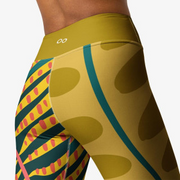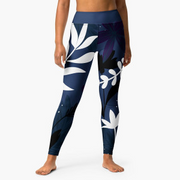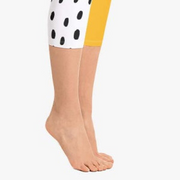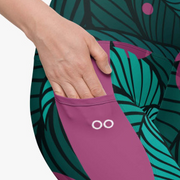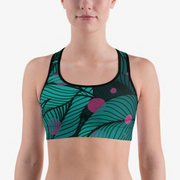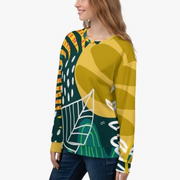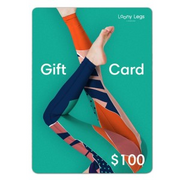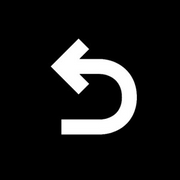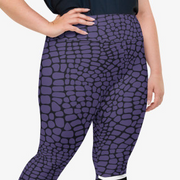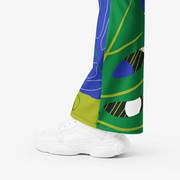If you've ever wondered, "What is the right bra size for me?"—trust us, you're in good company. With factors like weight changes, pregnancy, and even diet tweaks affecting your bust size, it’s no surprise that finding the right fit can feel like a never-ending quest.
In fact, a whopping 80% of women are rocking the wrong bra size simply because they don’t know how to measure themselves properly. But guess what? That changes today!
We're here to help you ditch discomfort and discover a sports bra that actually fits—so you can move, stretch, and sweat with total confidence.
Ready to find your perfect fit? Check out our easy step-by-step guide below and say hello to your comfiest workouts ever!
How To Measure Your Sports Bra Size
Wearing the wrong size bra can be more than just uncomfortable—it can impact your performance and confidence during workouts. To find the right sports bra size you'll need to measure your rib cage and bust, plus you'll need to calculate your cup size. Here are a few tips for making sure your sports bra fits perfectly:
Step 1: Rib cage measurement
Measure the circumference of your ribcage, directly below your breasts. The soft tape measure needs to be tight but loose enough to allow two fingers to fit underneath. To the nearest whole inch, round down.
Find the band size that corresponds to your rib cage measurement using the table below.
Step 2: Bust measurement
Take your bust measurement around your breast's largest area. Once more, the tape measure should be snug but not too tight to make breathing difficult.
Step 3: Cup size calculation
Take the difference between your bust and rib cage measurements. The difference is the cup size. Round up if you're in between sizes.

Why is it important to have a good sports bra for workouts?
Your breasts move in a figure-eight pattern when you're jogging, occasionally rising and falling by as much as eight inches. Your Cooper's ligaments, which are slender bands of connective breast tissue that support your breasts, are put under a great deal of strain as a result. You're likely to feel sore if you don't have the right support, and you run the risk of doing long term damage.
University of Portsmouth sports scientists looked at the effects of jogging on breast tissue while using different types of sports bras and everyday bras. They discovered that while sports bras with low to medium impact diminish bounce, they are ineffective at reducing the side-to-side movement that occurs when jogging.
In fact, their research demonstrates that depending on the type of bra worn, women run differently. Therefore, a decent sports bra will not only give you essential support, but it may also enable you to achieve a new personal best.
What Should I Look For When Sports Bra Shopping?
Finding the perfect sports bra isn’t just about style—it’s about support, fit, and comfort. The right bra should keep you feeling secure and confident, no matter how intense your workout is. Here’s what to look for when choosing a sports bra that fits correctly and supports your natural shape.
1. Check the Fit
A snug fit is key, but your bra shouldn’t feel restrictive. The band should sit flat against your ribcage without digging in or riding up. You should be able to fit two fingers between the band and your skin—any more, and it’s too loose; any less, and it’s too tight.
2. Use a Size Chart
Every brand has slight variations in sizing, so always check the size chart before buying. If you're between sizes, try both to find the best fit.

Loony Legs Sport Bra Size Chart
3. Control Breast Movement
A good sports bra should minimize breast movement without feeling overly restrictive. If your breasts bounce excessively during a jump test, the bra may not offer enough support. High-impact activities require maximum support, while lower-impact activities can work with less compression.
4. Choose a Shape That Works for You
Sports bras come in different designs, from compression styles (which flatten the breast shape slightly) to encapsulation bras (which provide individual breast shape support). Pick the style that feels best for your body and activity level.
5. Test the Straps & Band
The straps should stay in place without slipping or digging into your shoulders. A well-fitted band provides most of the support, so make sure it stays put when you move. If the band moves up your back, it's too big; if it digs in, it's too small.
By focusing on fit, support, and movement control, you’ll find a sports bra that keeps you comfortable and confident during every workout.
Alternatives to measure bra size
For fit, try a few different cup sizes. Without gaps or creases, cups should fit snugly and securely without being too tight to cause your breasts to protrude over the side or over the top of them.
What level of support do I need?
Three levels of support are available in sports bras: low, medium, and high impact. Your cup size and the kind of workout you undertake will determine the type you need.
Low-medium impact sports bras
These sports bras are designed to give you support for exercises such as yoga, cycling and strength training.
Low-medium impact sports bras usually have no cups and limit movement by squeezing the breasts firmly against the chest wall.
Medium-High impact sports bras
For high impact activities such as running, aerobics and mountain biking.
High impact bras are designed to enclose and support each breast with a defined cup shape, similar to that of a conventional bra. To provide the most support, certain high impact bras will combine compression and encapsulation technologies.
Read More: 5 Cute Workout Outfit Ideas For 2024

Tips for getting the correct bra size
Tight but breathable
You should be able to fit two fingers between the straps and your shoulders in a sports bra, which should be more restrictive than a conventional bra in terms of fit but not breathing space.
No wrinkling
The cup's material should be smooth. Usually, wrinkles in the cloth indicate that the cup is too large. On the other hand, if you're spilling, the cup is too small.
Gapping
Any underwire should not dig in or pinch your breast tissue; it should instead lay flat against the rib cage underneath it.
Check the straps
Put your hands in the air above your head. Although it's possible that the straps or the back closure may need to be adjusted, if the band rides up, it's usually a sign that the garment is too big.
How Long Should a Sports Bra Last?
The lifespan of a sports bra depends on how often you wear it, the intensity of your workouts, and how well you care for it. Typically, a sports bra should last between 6 to 12 months if worn regularly. Over time, the elasticity in the bra band size and straps may stretch out, meaning it no longer provides the support you need.
Signs that it’s time to replace your sports bra include:
-
The bra band feels loose: The band should always feel snug around your ribcage, as it provides the majority of the support. If it’s stretched out, the bra won’t perform effectively.
-
Worn-out straps: Adjustable straps should hold their position during your workout. If they frequently slip or lose tension, the bra may no longer fit properly.
-
Lack of support: Whether you prefer a padded bra or a non-padded bra, it should hold every part of your bust securely without gaps or excessive movement.
To extend the life of your sports bras, avoid overwashing them, use a gentle detergent, and air dry them to maintain their elasticity and fit. Having a rotation of bras can also help reduce wear and tear, ensuring you always have one that feels snug and supportive.
Related Reading: How Often Should You Wash Leggings? Your Care Guide
Treat Yourself to a New Sports Bra Today…
At Loony Legs, we have sports bras and leggings in gorgeous patterns and a huge range of sizes, so you can look and feel your best in and out the gym!
Choosing a pair of leggings doesn't have to be a chore, either. With a huge range of funky patterns and colours, we're sure you'll find the perfect pair to match with our super comfortable sports bras.
Shop our collection now and get free shipping over $100 / £77!
How to measure sports bra size FAQs
What is the perfect fit for a sports bra?
Simply fasten a comfortable-feeling clasp to your sports bra. The band and your chest should be close enough to allow two fingers to pass through without discomfort. The band is too tight if you are unable to. It is too loose if you can slip more than two fingers.
Should a sports bra be one size bigger?
The majority of women make the error of selecting a band and cup size that are larger than what they actually require. The majority of the support for your chest actually comes from the band that surrounds your rib cage. It should fit flat against your skin, right below your breasts, and be more restrictive than your typical bra.
Do sports bras get looser over time?
They do stretch if it feels too tight at first. If you want your sports bra to last longer, it's ideal to choose a tighter fit (as long as it's not uncomfortably tight) and let it stretch up gradually.

